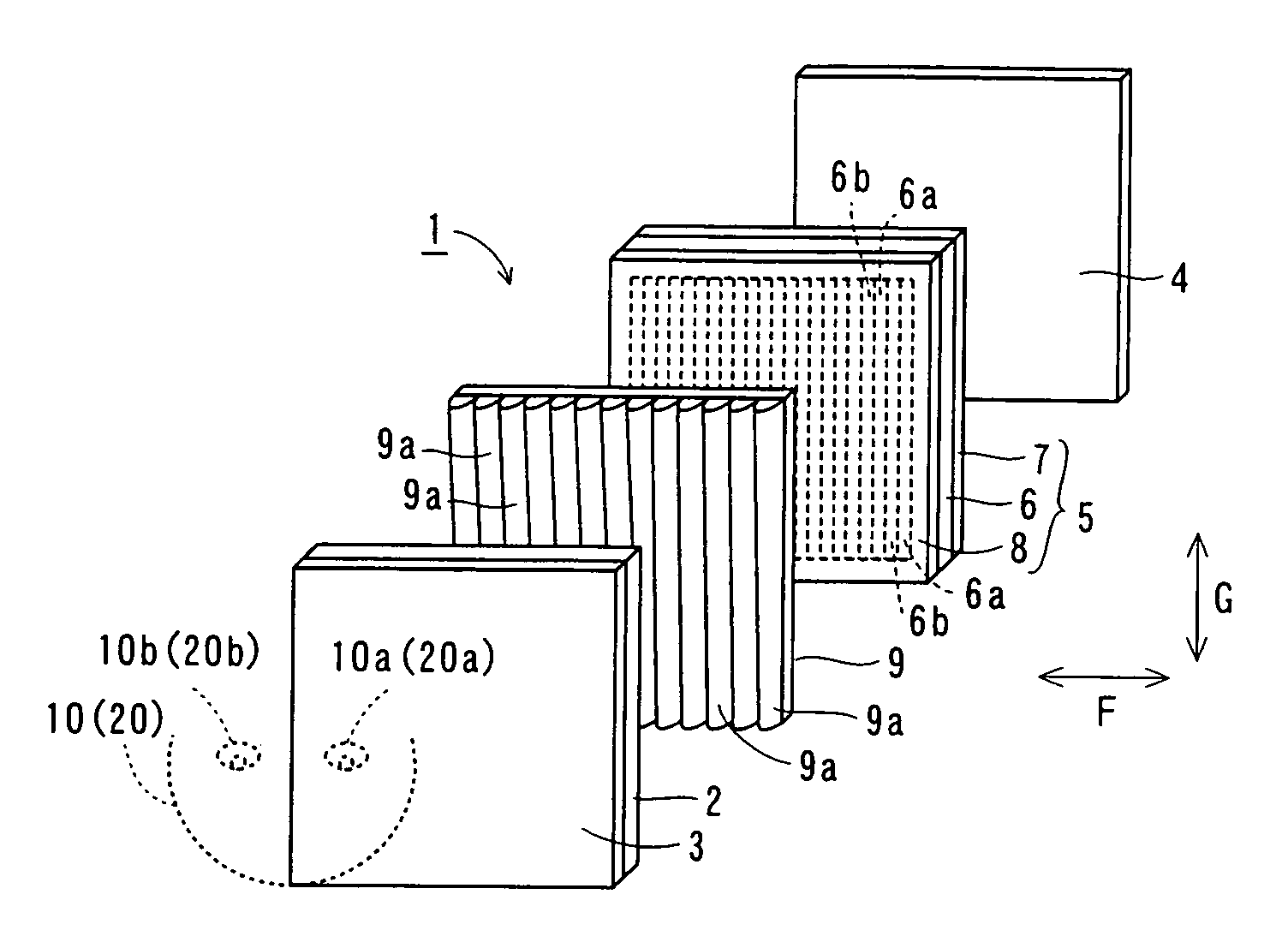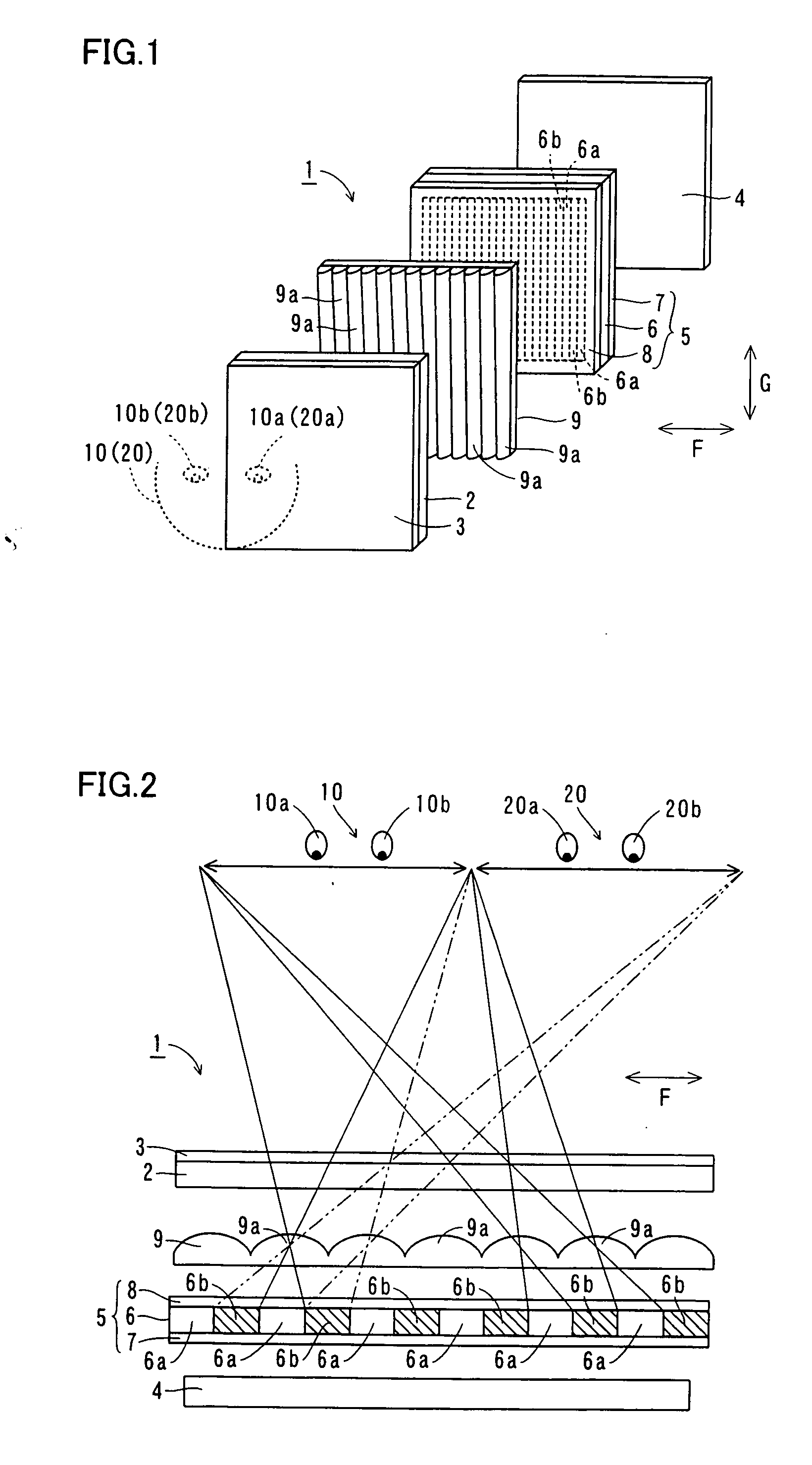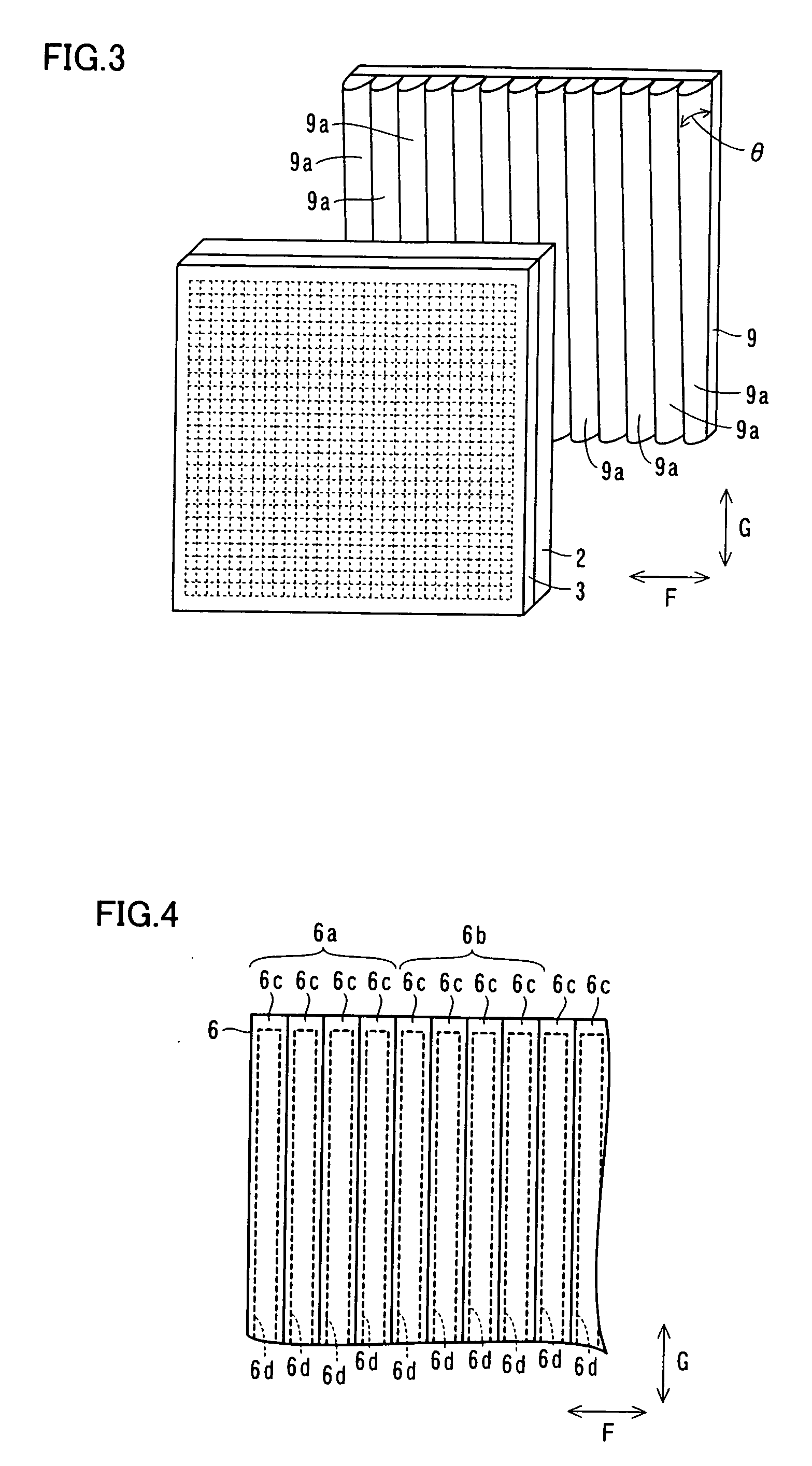Image display
a technology of image display and sonic wave, which is applied in the field of image display, can solve the problems of difficult to provide stereoscopic images to a plurality of observers, and disadvantageously difficult to reduce or increase the length x of light arrival, so as to reduce the number of components, reduce the formation of interference fringes, and facilitate transmission
- Summary
- Abstract
- Description
- Claims
- Application Information
AI Technical Summary
Benefits of technology
Problems solved by technology
Method used
Image
Examples
first embodiment
[0047] The structure of an image display 1 according to a first embodiment of the present invention is described with reference to FIGS. 1 to 4.
[0048] As shown in FIGS. 1 and 2, the image display 1 according to the first embodiment of the present invention comprises a display panel 2 for displaying images, a polarizing plate 3 mounted on a side of the display panel 2 closer to observers 10 and 20 and a backlight 4 for irradiating light toward the display panel 2.
[0049] According to the first embodiment, a light emission control liquid crystal unit 5 is arranged on a side of the backlight 4 closer to the observers 10 and 20. The light emission control liquid crystal unit 5 is an example of the “light emission control means” in the present invention. As shown in FIG. 2, this light emission control liquid crystal unit 5 includes a light emission control liquid crystal panel 6 having transmissive areas 6a and shielding areas 6b for transmitting and blocking the light irradiated from t...
second embodiment
[0076] Referring to FIG. 12, an image display 100 according to a second embodiment of the present invention changes the position for displaying stereoscopic images following movement of the observational position of an observer, dissimilarly to the aforementioned first embodiment.
[0077] As shown in FIG. 12, the image display 100 according to the second embodiment comprises a position sensor 130 for sensing the position of an observer 10 and a control portion 140 for moving transmissive areas 6a for transmitting light and shielding areas 6b for blocking light by driving electrodes 6d of a light emission control liquid crystal panel 6 of a light emission control liquid crystal unit 5 in response to the position of the observer 10 sensed by the position sensor 130. The position sensor 130 is an example of the “position sensing means” in the present invention. According to the second embodiment, the image display 100 constitutes each transmissive area 6a of the light transmission contr...
third embodiment
[0081] Referring to FIG. 13, a lenticular lens portion 202a is integrated with a display panel 202 in an image display 200 according to a third embodiment of the present invention, dissimilarly to the aforementioned first embodiment. The remaining structure of the third embodiment is similar to that of the aforementioned first embodiment, and hence redundant description is not repeated.
[0082] As shown in FIG. 13, the image display 200 according to the third embodiment of the present invention comprises the display panel 202 for displaying images, a polarizing plate 3 mounted on a side of the display panel 202 closer to observers 10 and 20 and a backlight 4 for irradiating light toward the display panel 202.
[0083] According to the third embodiment, the display panel 202 is integrated with the lenticular lens portion 202a. Thus, the number of components can be reduced as compared with a case of providing the lenticular lens portion 202a and the display panel 202 independently of eac...
PUM
 Login to View More
Login to View More Abstract
Description
Claims
Application Information
 Login to View More
Login to View More - R&D
- Intellectual Property
- Life Sciences
- Materials
- Tech Scout
- Unparalleled Data Quality
- Higher Quality Content
- 60% Fewer Hallucinations
Browse by: Latest US Patents, China's latest patents, Technical Efficacy Thesaurus, Application Domain, Technology Topic, Popular Technical Reports.
© 2025 PatSnap. All rights reserved.Legal|Privacy policy|Modern Slavery Act Transparency Statement|Sitemap|About US| Contact US: help@patsnap.com



